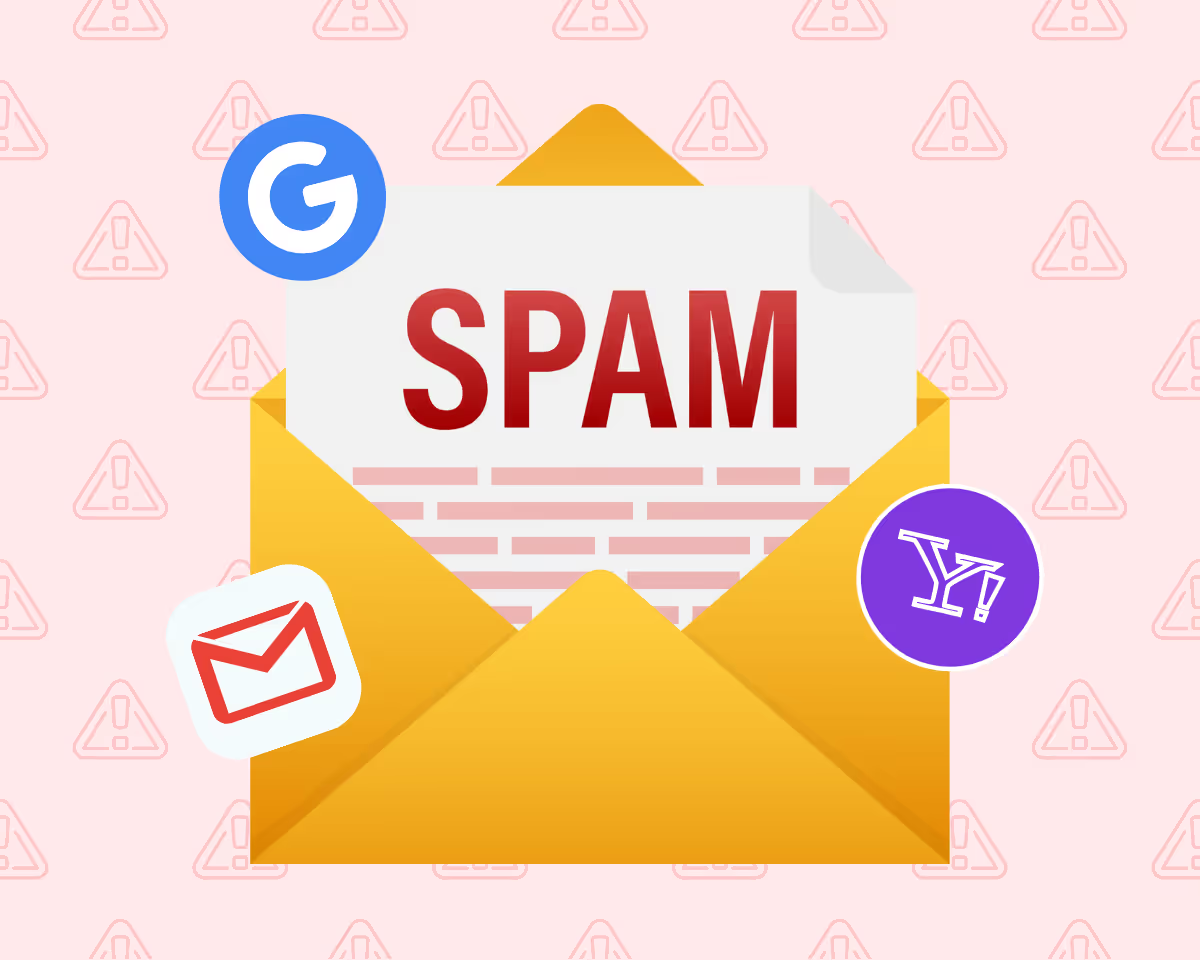Ready to create more pipeline?
Get a demo and discover why thousands of SDR and Sales teams trust LeadIQ to help them build pipeline confidently.



Gmail and Yahoo are implementing stricter spam filtering rules in 2024, including stronger email authentication, one-click unsubscribe options, and a low spam complaint threshold.

Sales teams must adapt to these changes by personalizing outreach, implementing authentication mechanisms, and monitoring sender reputation to ensure their emails reach the intended inboxes.

The new rules emphasize the need for highly personalized, targeted outreach to avoid being flagged as spam, making tools like LeadIQ’s Scribe essential for effective prospecting.
Get a demo and discover why thousands of SDR and Sales teams trust LeadIQ to help them build pipeline confidently.
Since our inception, LeadIQ has always been a champion of personalized and targeted cold outreach.
Our mission is simple — to make the sales process better for sellers and buyers alike — and you can’t do that if you’re spamming prospects with bad cold outreach sequences that provide little-to-no value.
When it comes to outbound prospecting, there’s a fine line between helping and harassing or spamming someone. Even so, research suggests more than 120 billion spam emails are sent around the world every day.
To provide a better inbox experience for users, two leading email providers — Gmail and Yahoo Mail — recently announced several changes designed specifically to reduce spam and make it easier for folks to unsubscribe from commercial email lists.
Keep reading to learn more about what the new Gmail spam filtering rules are, how they impact outbound prospecting, and what sales teams can do to prepare for these changes.
At a high level, there are four key changes in the new spam filtering rules, which go into effect on Gmail starting Feb. 1, 2024, and sometime during the first quarter for Yahoo Mail.
To prevent spoofed emails from hitting users’ inboxes, Gmail and Yahoo are requiring bulk senders — those who send at least 5,000 emails per day — to adhere to more robust authentication best practices. That way, users can be confident that each message that lands in their inbox is sent by the person it appears to be from.
Prospects shouldn’t have to navigate a labyrinthine maze to get off a rep’s mailing list. As such, the new Yahoo and Gmail spam filtering rules force bulk senders to give recipients the ability to opt out of commercial email lists in one click.
Being able to opt out of a list in a single click is one thing. But for that to matter, senders must actually honor those unsubscribe requests. The new rules force them to do exactly that: remove folks who unsubscribe within 48 hours.
If you want to land in a prospect’s inbox, you need to craft compelling outbound sequences. In the event tons of users flag your messages as spam, Gmail and Yahoo will make sure prospects never see your messages. The new spam filtering rules include a reduced spam rate threshold — just 0.3% — that users must stay under if they want to be considered a legitimate email sender.
When the news broke about the new filters being more aggressive about cold email spam — a notion that was amplified by leading sales engagement platforms — social media lit up, with sales leaders weighing in on what it all means for SaaS sales teams.
The big takeaway? The days of flooding prospects with an endless amount of generic emails are all but over (as it should be.)
Let’s take a look at how the new spam filtering rules might impact your outbound prospecting efforts.

Cold email deliverability has never been a walk in the park, and the new Yahoo and Gmail spam filtering rules make it even more challenging. If you’re sending messages to someone out of the blue, there’s a higher likelihood that they’ll mark your message as spam. Do it enough, and staying under that 0.3% threshold becomes impossible — to the point where you can potentially get blocked from sending emails automatically.
These new rules only apply to bulk senders that send at least 5,000 emails each day. So, if you’re a smaller operation, they might not impact you as much. Even so, all SaaS sales teams are focused on the same thing: scaling their organization. That being the case, reps need to let these rules inform their strategy so that they don’t have to change their approach as the organization becomes bigger and bigger. If you’re still operating on a spray-and-pray methodology, it’s long overdue that you start to become more targeted in your outreach.
At this point, you might be thinking something along these lines: I don’t send anywhere near 5,000 emails per day, so obviously this doesn’t impact me. Wrong! Yahoo and Gmail define bulk senders as organizations sending messages from the same domain. So, every message originating from your domain that hits an inbox counts toward that 5,000 threshold — even password resets. As such, It’s more important than ever for sales and marketing teams to become aligned when it comes to automated email campaigns and outreach.
While GTM teams will likely have to make some changes to their prospecting workflows to abide by the new Yahoo and Gmail spam filters, the good news is that there’s still time to get ready for enforcement. With that in mind, let’s take a look at some of the tactics you can use to ensure your sales team is operating in such a way that ensures messages end up in front of the people you want to see them.
First things first: Avoid spam filters by implementing robust email authentication mechanisms, like Sender Policy Framework (SPF), DomainKeys Identified Mail (DKIM), and Domain-based Message Authentication, Reporting, and Conformance (DMARC). Such mechanisms demonstrate the authenticity of your sending domain while helping you establish a strong sender domain reputation.
It’s a minor fix but a big one. Moving forward, make sure all of the messages you send through a sales engagement platform like Outreach of Salesloft include a click-to-unsubscribe link. Otherwise, you’ll be considered spam.
Making sure you land in prospect inboxes starts with ensuring you have a favorable sender reputation and that recipients aren’t constantly marking messages as spam. As a best practice, make it a habit to use Google Postmaster to regularly review your organization’s sender reputation and abuse complaints and take immediate action if the data is trending in the wrong direction.
While you’re at it, you might also want to consider setting up separate domains for both marketing campaigns and cold outreach. Of course, this comes with its own inbox warm-up challenges you’ll need to consider to once again avoid ending up in spam folders.
The way we see it, the new updates from Google and Yahoo only reinforce the need for a personal approach to building relationships via outbound prospecting — something we’ve always advocated for. Instead of using the extremely outdated “spray and pray” approach to prospecting, sales teams will need to make sure that they send the right message at the right time to the right person.
While sales reps might have been chomping at the bit with the arrival of generative AI solutions designed to help them write emails faster, it’s critical to ensure that the use of AI doesn’t cause spam filters to kick your organization out of inboxes forever.
This doesn’t mean your organization needs to avoid AI entirely — quite the contrary. After all, not every generative AI solution is created equal.
LeadIQ’s Scribe, for example, enables you to create personalized emails at scale using generative AI. It’s an easy way to guarantee that each message your team sends is genuine, resonates, and reduces the chances a recipient marks you as spam.
To learn more about how generative AI tools can supercharge your outbound prospecting efforts, try Scribe today.